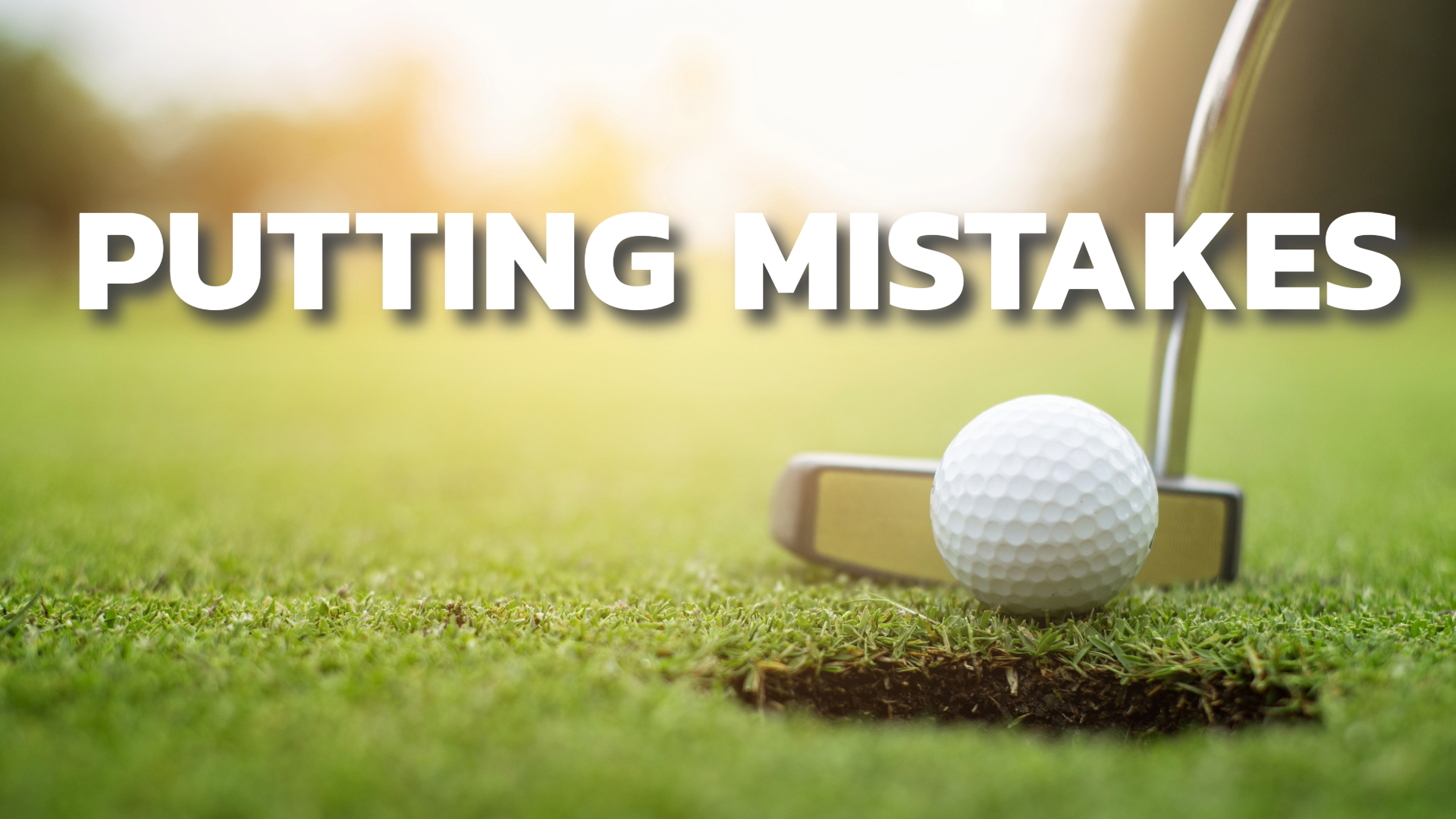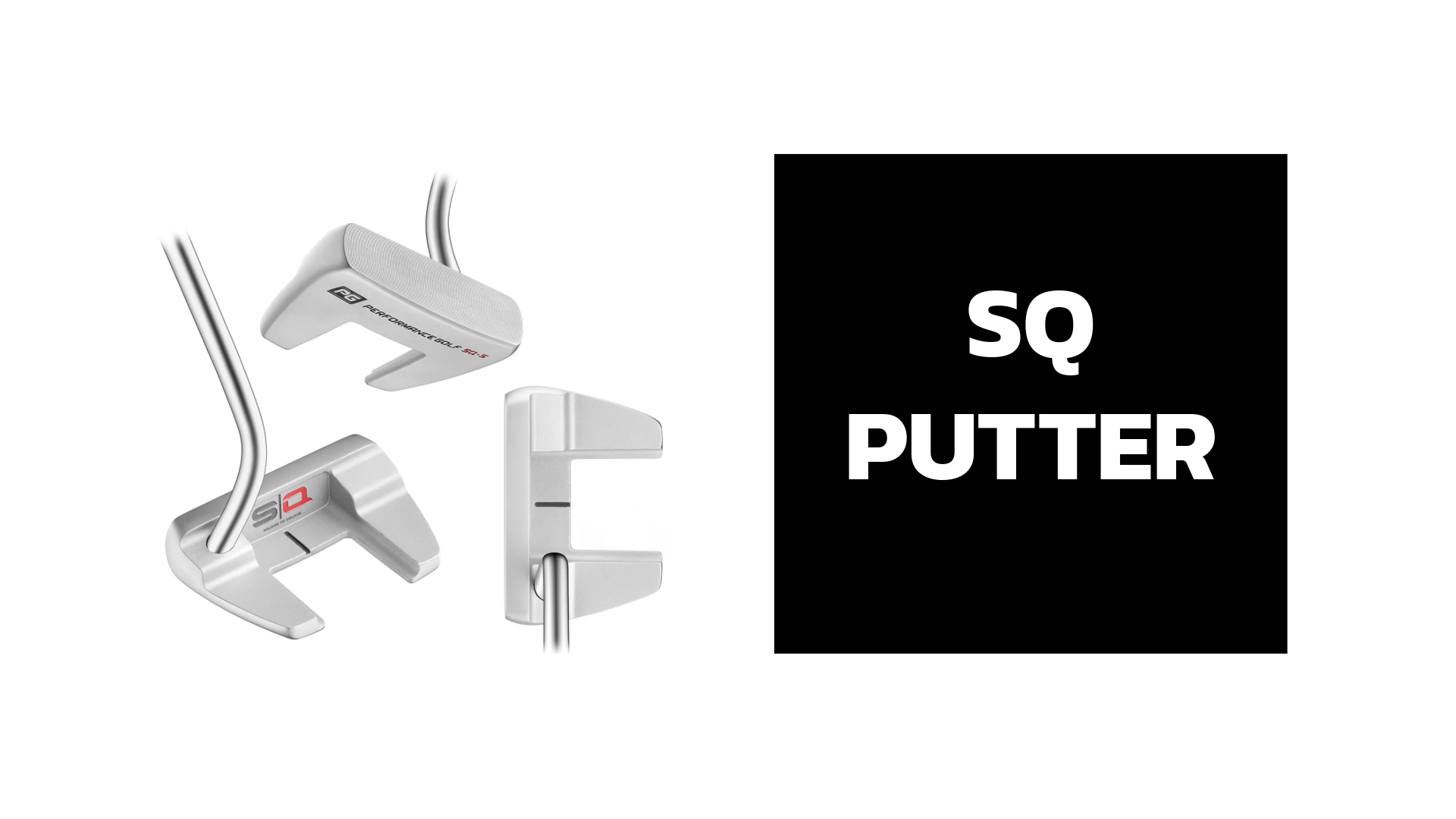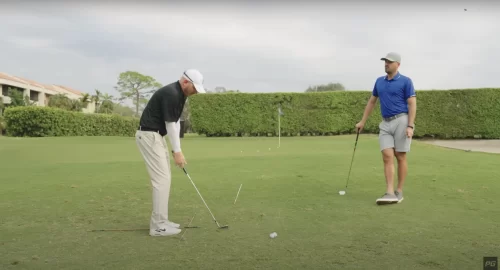
If you want to stop 3-putting, you need to avoid these seven putting mistakes. When you implement these tips, you’ll have more confidence every time you step on the green and hopefully, shoot fewer putts per round.
If you’re a newer golfer, start by reading this putting tips guide to set the foundation for a solid putting stroke.
7 Putting Mistakes Most Golfers Make
Putting is an incredibly important part of the game and one that can prove some challenges, even for the pros. As Seve Ballesteros said, “A great putter is a match for anyone. A bad putter is a match for no one.”
Avoid these mistakes to take your short game to the next level.
1. Setting Unrealistic Expectations
If you watch golf on TV, you might be setting yourself up for disappointment without even realizing it.
While watching professional golf is a ton of fun, it’s also a highlight reel of the best golfers during their best weeks of the year. This is not how they normally play (aside from maybe Scottie Scheffler, who is wildly consistent).
The coverage only shows the best drives, the best irons, and the best putts – usually a lot of long range ones. We bring this up so you have the right expectations for every putt.
For example, the chances of a professional golfer making an 8-footer are only 50%! That’s right, they only make one out of every two putts from this distance.
So if you hit a great shot to eight feet and miss, don’t beat yourself up. Understand that even pros will miss that putt about half the time.
Having the right expectations can help you have the right mindset and hopefully remove pressure.
2. Using the Wrong Putter
Equipment can do wonders for your golf game, which is why it’s so important to start by evaluating your putter. You should look down at your putter and have a ton of confidence.
In general, most amateur golfers will benefit from a mallet style putter, as they’re more forgiving. So if you do hit some off the toe or heel, they still roll pretty true and won’t end up several feet short.
Additionally, mallet putters are typically easier to line up. Proper alignment is half the battle in putting and these clubs have built in alignment aids that make it so much easier to get the ball started on the proper line.
While the look is important, don’t forget to consider putter length and grip. Most average height males will benefit from a 34-inch putter to get your eyes over the right position.
Lastly, make sure the grip isn’t too worn down, or it might negatively affect your grip pressure.
If you’re ready to really up your putting practice game, check out the SQ Putter, The #1 “Straighter Stroke” putter for amateur golfers.

3. Too Much Head Movement
Once you have the right expectations, a good putter and comfortable grip…you need to avoid the biggest mechanical mistake of putting.
Too much head movement.
If you watch the best golfers in the world, you will notice how steady their head is on every single putt. While most amateurs move way too much, which changes your low point and leads to hitting up or down on the golf ball.
Imagine something on top of your head and try to stay so still that it wouldn’t fall off as you putt. This will allow you to rock your upper body, reduce wrist movement, and make solid contact. The more you hit the sweet spot, the more often you’ll get the ball on the proper start line with enough speed.
4. Not Testing Different Grip Styles
Unlike the full swing, there is no proper grip when it comes to putting. Instead, there’s a huge variety including conventional, left-hand low (cross hand), claw, prayer, armlock, and other variations.
The most popular style on the PGA Tour is a conventional grip, followed by cross handed, and then the claw. Each type of grip has their own pros and cons, so we encourage you to test out different styles to see which works best for you.
We also recommend starting with a conventional grip as it’s very similar to your full swing grip. But if you’re missing short putts or lack confidence, consider trying cross hand.
For right-handed golfers, this makes the left-hand dominant and can have an immediate impact on making more short putts. You can also try the claw or prayer grip. Not to mention different styles of putters like an armlock or broomstick putter.

5. Not Learning From Your Playing Partners
Another common mistake that a lot of golfers make unintentionally is not taking advantage of what you can learn from playing with others on the course. Whether someone is on a similar line or different from yours, you should watch their putt to learn the speed of the greens.
Some greens might also be faster or slower than others and you can learn a ton from fellow playing partners. If they are on a similar line, make sure to watch how much break they play alongside the pace as well.
6. Not Committing to a Read
Even if you develop a putting stroke like Tiger Woods, you still need to commit to every putt. Learning how to read greens is one of the most important skills so you can then have a clear picture of how the ball will break.
The problem that most golfers make is that they don’t have a green reading routine and/or don’t fully commit. If you don’t commit to how the putt will break and the speed of the putt (uphill, downhill, flat) it’s easy to make a timid stroke. Which usually leaves putts short of the cup with zero percent chance of going in.
To give yourself the best chance to make putts, always commit to the path and pace of the putt.
Get insanely clear so you can commit and hit a good putt. Before taking any practice strokes, make sure you line the ball up properly to where you need the putt to start so it can break and hopefully find the hole.
If you’re standing over the ball questioning your read, step off and reset so you’re 100% committed.
7. Not Getting Short Putts to the Hole
The final putting mistake that you need to avoid is failing to get the ball inside 10 feet of the hole. The old saying, “Never up, never in” is 100% true when it comes to short, makeable putts.
This isn’t a hard and fast rule with all length putts, but it’s vital for short putts. When you get the ball to the hole and avoid the other six mistakes, you will improve your putting fast.
Avoid These Putting Mistakes for a Great Short Game
If you need even more tips, make sure to read our guide with five of the best putting tips for beginners. Paired with some regular putting practice at home with an indoor mat or on the golf course, you’ll lower your scores fast.
Also, don’t forget to avoid these common mistakes in golf (from tee to green) as well.
If you need any more help with putting, remember we have tons of resources to help! You can check out Hot Stick Putting by Kevin Weeks; his 3-step method you can overcome the yips, minimize three putts, and reduce your total number of putts significantly. There’s also our new SQ Putter, designed exclusively for amateurs to eliminate pushes, pulls, and 3-putts.

